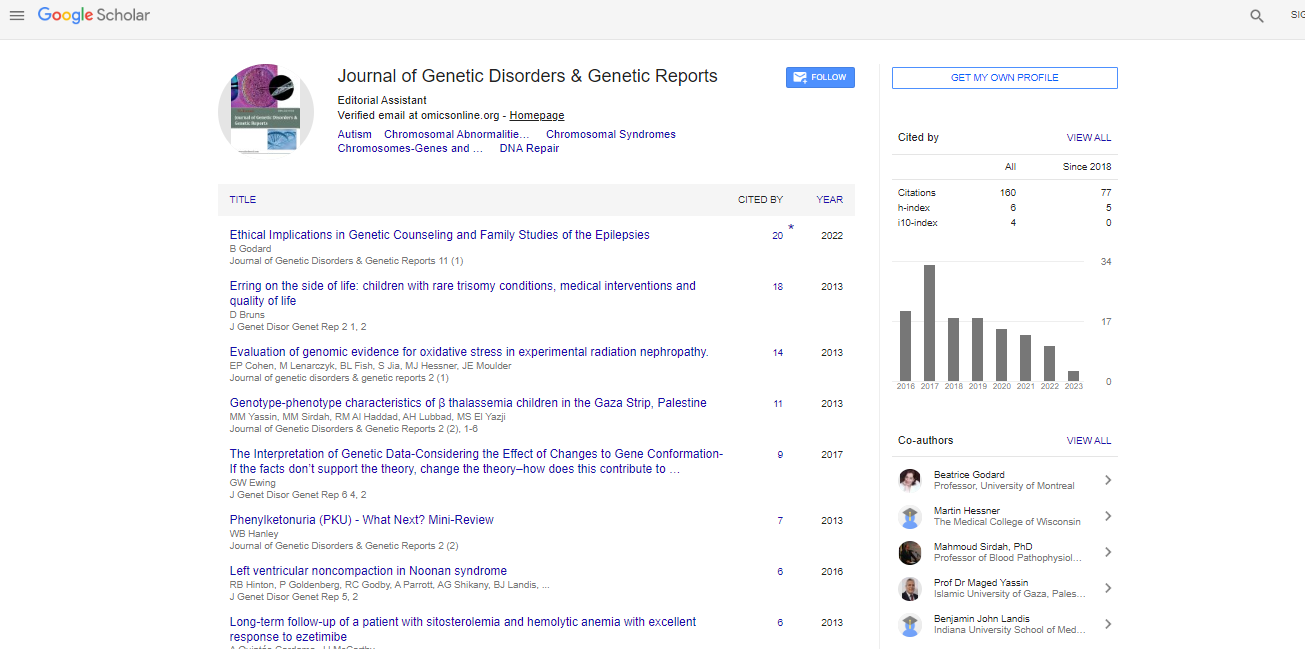Research Article, J Genet Disor Genet Rep Vol: 4 Issue: 1
Impact of Consanguinity on Health in a Highly Endogamous Population in District Buner, Khyber Pakhtunkhwa, Pakistan
| Jehangir Khan*, Arshad Ali, Bakht Tarin Khan, Zaheer Ahmad and Waqas Ahmad Shams |
| Zoology Department, Abdul Wali Khan University Mardan, Buner Campus, Khyber Pakhtunkhwa, Pakistan |
| Corresponding author : Dr. Jehangir Khan Zoology Department, Abdul Wali Khan University Mardan, Khyber Pakhtunkhwa, Pakistan Tel: +923334399893 E-mail: Abu_amna2013@hotmail.com |
| Received: February 10, 2015 Accepted: February 22, 2015 Published: February 25, 2015 |
| Citation: Khan J, Ali A, Khan BT, Ahmad Z, Shams WA (2015) Impact of Consanguinity on Health in a Highly Endogamous Population in District Buner, Khyber Pakhtunkhwa, Pakistan. J Genet Disor Genet Rep 4:1. doi:10.4172/2327-5790.1000121 |
Abstract
Impact of Consanguinity on Health in a Highly Endogamous Population in District Buner, Khyber Pakhtunkhwa, Pakistan
Objective: Consanguineous unions are a deeply rooted social practice among traditional societies in Pakistan. Despite their presumed social advantages, they can result in several genetic disorders. The present study was designed to study the epidemiological trends of consanguineous marriages in district Buner, KPK, Pakistan. Method: A survey from March to September, 2014, was conducted at twelve sampling areas in Tehsil Gaggra of district Buner, Khyber Pakhtunkhwa (KPK), Pakistan. Results: The couples (n=70) participated were 1st cousin (84.3%) and 2nd cousin (15.7%). The minimum age of the couples at the time of marriage was 16 and maximum 30 years, however, maximum marriages were observed at the age of 18year. The offspring were thoroughly observed for the health complications like anemia (28.6%,), obesity (17.1 %), blood pressure (18.6%), diabetes (18.6%), asthma (10%) and respiratory disease (7.1%) respectively. The percentage of malformation found in the live children of consanguineous married couples were mental retardation (28.7%), deafness and speech disorder (23.3%), anemia (14.7%), syndrome (15.5%), dwarfism (3.9%), blindness (8.5%) and skin diseases (5.4%). Among the surveyed areas, Chagharzi has the highest (41.3%) trend of cousin marriages followed by Shalbandi (17.1%) and Bajkata (12.9%). Additionally, the health conditions of the parents (couples) were also observed for the possible health concerns, which were obese (21.4%) and weak (42.8%) while 35.7% were normal. Conclusions: Cousin-marriages are a norm in the population of district Buner. Its effects on inherited disorders deserve comprehensive genetic, education, and premarital genetic counseling programs for awareness and education
 Spanish
Spanish  Chinese
Chinese  Russian
Russian  German
German  French
French  Japanese
Japanese  Portuguese
Portuguese  Hindi
Hindi 



